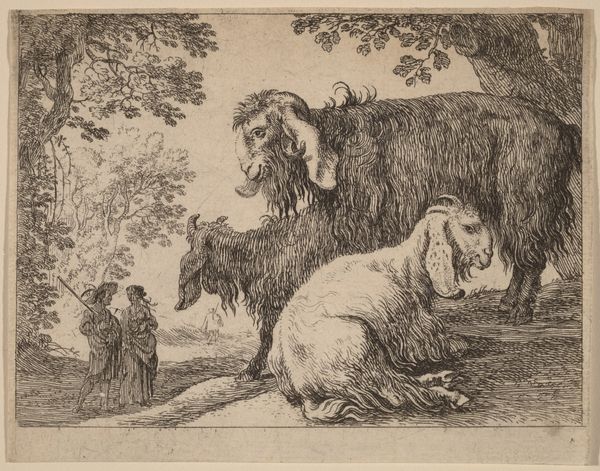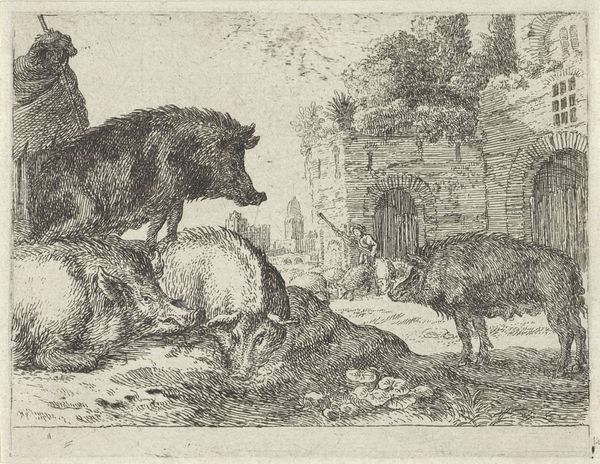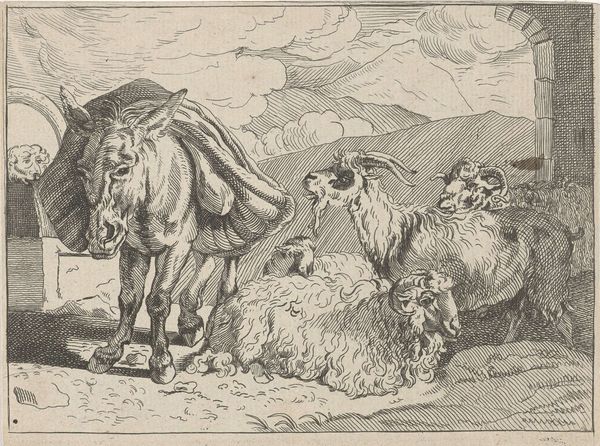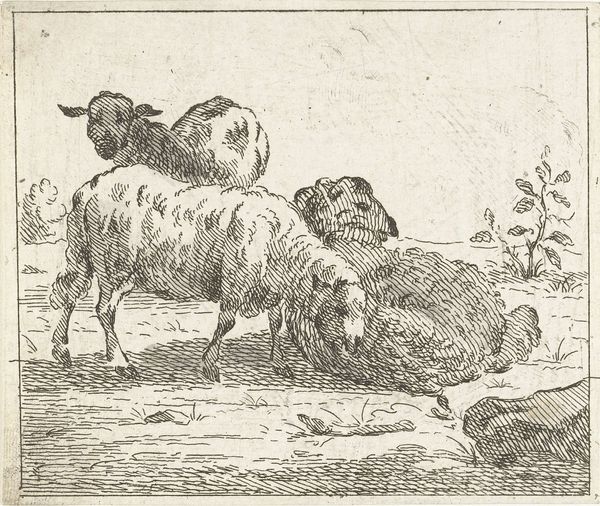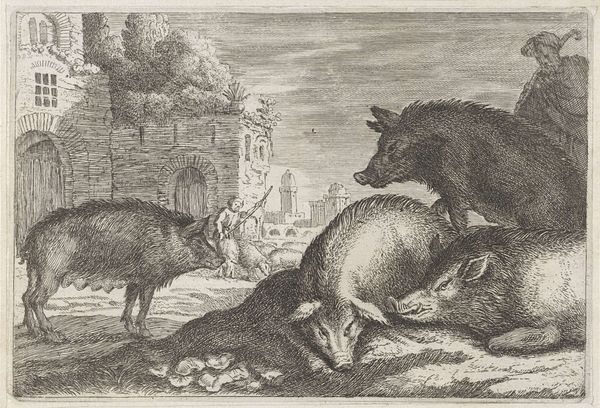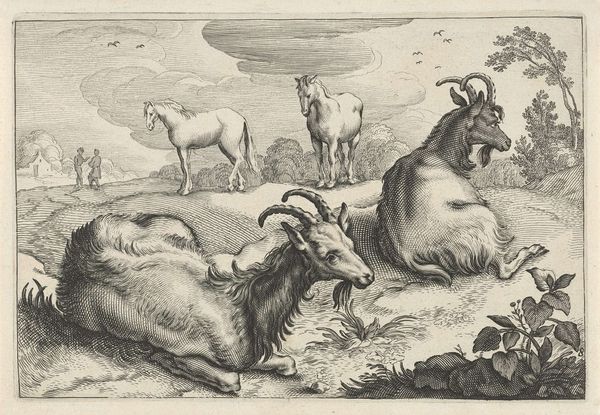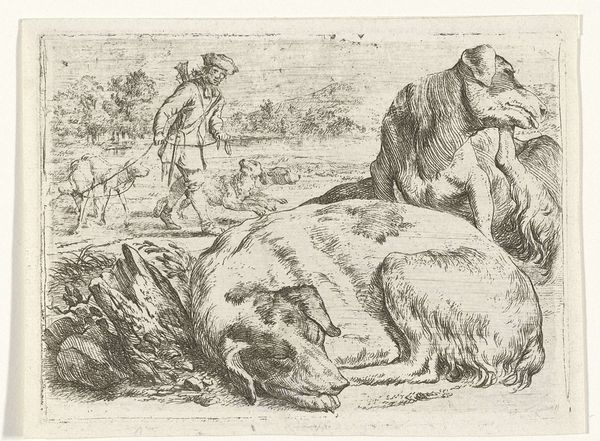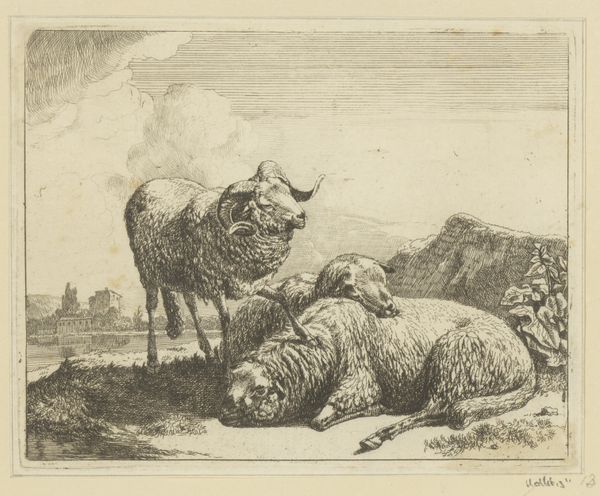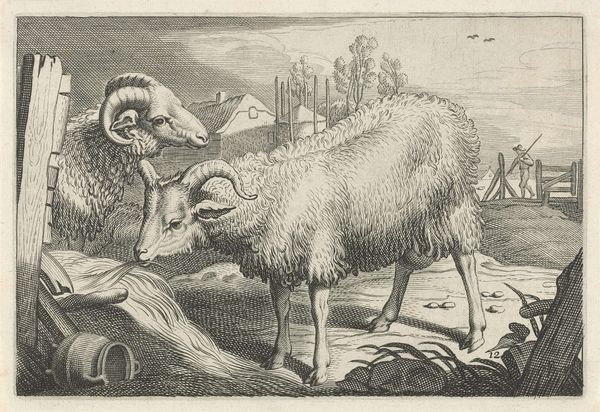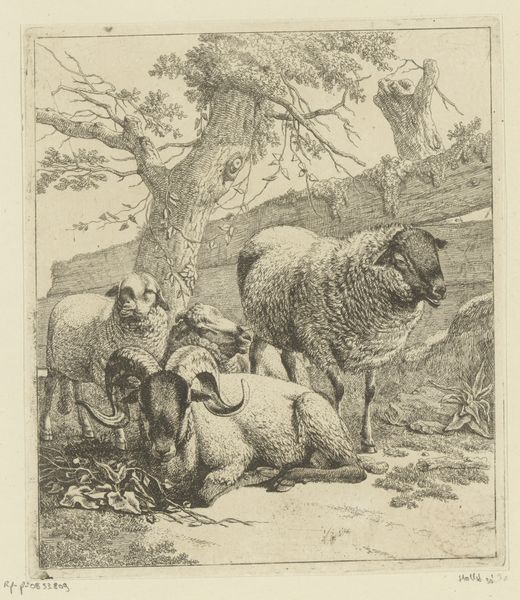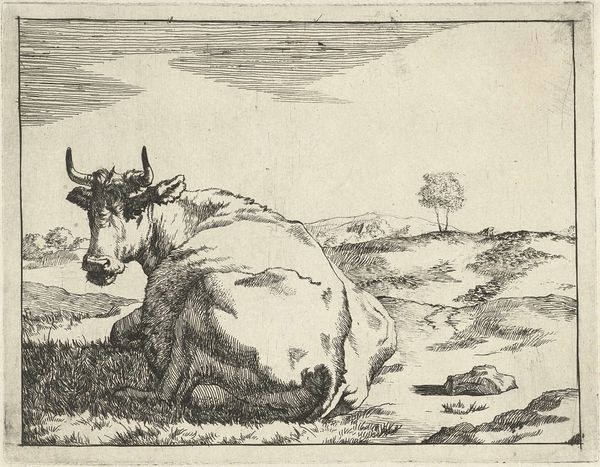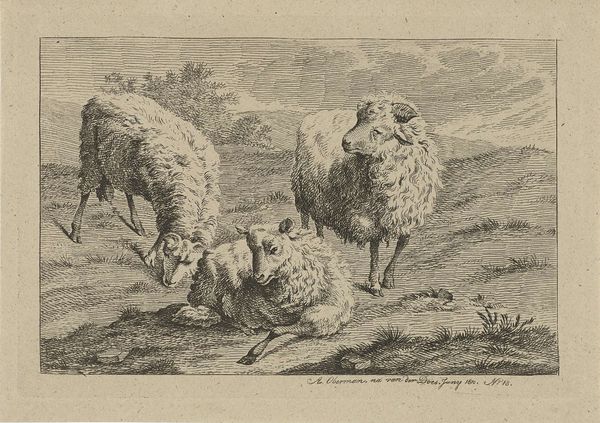
print, etching
#
animal
# print
#
etching
#
landscape
#
figuration
Dimensions: height 112 mm, width 165 mm
Copyright: Rijks Museum: Open Domain
Curator: We're looking at "Angoraschapen," or "Angora Sheep," an etching produced between 1636 and 1705 by an anonymous artist and held here at the Rijksmuseum. What are your first thoughts? Editor: Well, immediately, I'm struck by the density of the texture. Look at how much visual information they've packed into these sheep's coats, and with simple lines. It’s really all about material presence and suggests an artist deeply concerned with observation. Curator: Absolutely. Consider the broader implications here. The Angora goat and its fleece represented not only an agricultural resource but also a cultural symbol of luxury and trade in that historical context. What meanings are constructed and communicated when rendering these creatures? Editor: That's interesting. Because beyond just depicting sheep, it's documenting the means of their production: wool, its qualities, its texture. There’s also an environmental consideration. Those shepherds back there; what is their relation to this landscape of animal production? Curator: I think the inclusion of the shepherds invites a closer reading. It positions them as both caretakers and beneficiaries within a system heavily reliant on animal husbandry. Moreover, we could see those small human figures representing larger debates about social structures that exploit not only natural resources but also people, drawing comparisons to contemporary labor practices and power structures. Editor: But is this then an explicit social critique, or rather a faithful—perhaps celebratory—document of rural life? The technique, this kind of obsessive cross-hatching, strikes me as simply descriptive. It feels devoted to rendering tangible things like the wool, the goats' horns, and the shepherds’ staffs with utter clarity. The act of observing then takes center stage. Curator: While I appreciate your reading of technical process as a vehicle, I think the figures contribute an important layer to that process, making claims to territory and to modes of animal management which inevitably become wrapped up in larger socioeconomic forces and dialogues. What kind of narrative does it tell about humanity’s relationship with animals and the world we inhabit? Editor: Perhaps the enduring appeal lies in its testament to our fascination with texture and labor itself. Its ability to reveal to us something interesting in the making, not just a social point about ownership, means the visual legacy continues to provide something new. Curator: Precisely, and as a piece that captures the beginnings of globalization through resource exploitation, the etching still sparks critical engagements with complex layers related to socio-political issues to this day.
Comments
No comments
Be the first to comment and join the conversation on the ultimate creative platform.
